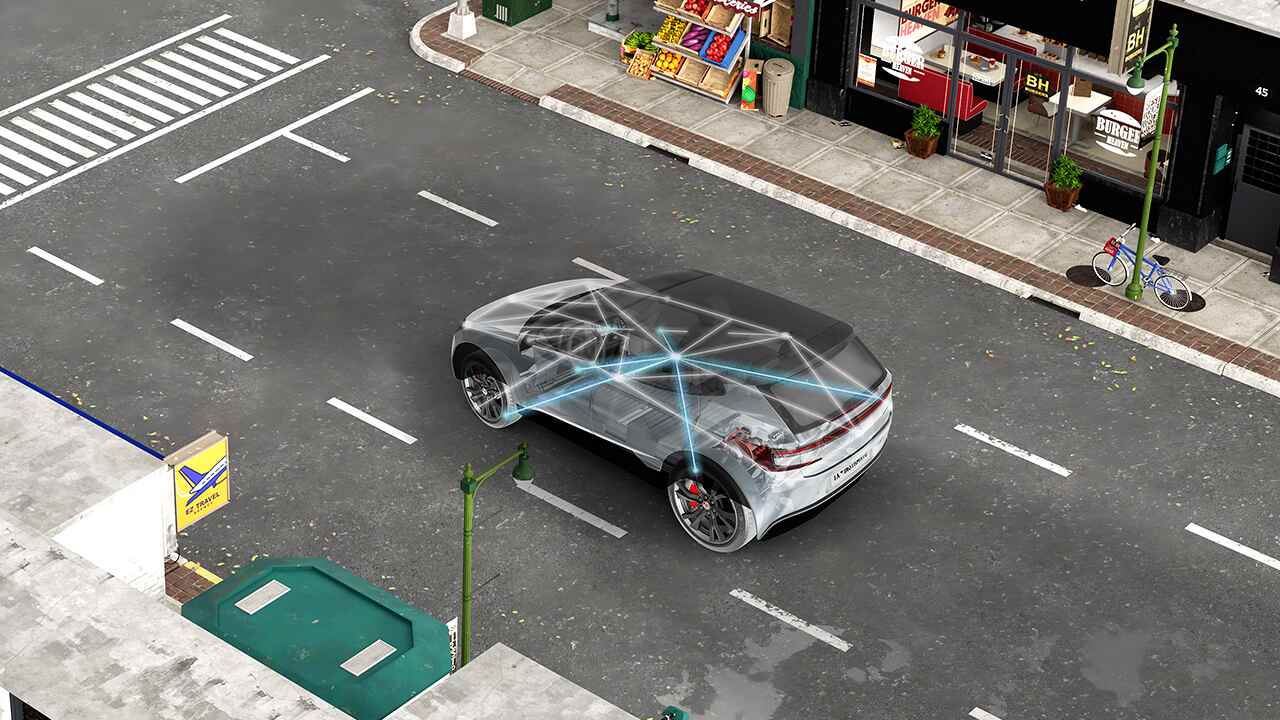Semiconductor technology is powering electric vehicles through the innovation curve, eliminating barriers to EV adoption and enabling automakers to design affordable cars that consumers love

My electric vehicle journey began five years ago, and I’m more excited about this journey today than I was when I bought my first EV.
I no longer am concerned about prices at the gas pump. Range anxiety is not an issue since I charge my vehicle overnight in my garage, and Hong Kong, where I live, has a tremendous quick-charging infrastructure. Punching the accelerator delivers instant torque that helps me keep up with the staggering number of supercars in this city.
My role leading a team that designs hybrid and EV powertrain technology gives me a unique perspective about electric vehicles. Instead of seeing them as cars with batteries and electric motors, I think of them as big electronic devices that are climbing the same steep innovation curve that has transformed the communications infrastructure, enterprise computing and personal electronics markets.
Our company’s technology is helping make EVs more accessible and our world safer and more energy efficient. Here are five innovations that represent a few of the reasons EVs are here to stay:
1. Confidence in the available range
Running out of battery power is one of consumers’ biggest concerns when they’re considering whether to buy an EV. There’s good news: Advanced battery management systems (BMS) are helping overcome critical barriers to widespread adoption, including concerns over drive range, safety, reliability and cost. Automakers strive to get the longest range possible, and accurate, state-of-charge battery calculations are vital to understanding how much charge you have left in vehicle. Our company’s new devices bring substantially higher precision to voltage and current measurement, giving automakers confidence to accurately measure an EV’s true driving range.
Advancements in battery monitors and balancers will enable better state-of-charge and state-of-health measurements, giving automakers the ability to charge and discharge a vehicle battery pack beyond any cell monitor previously on the market. This reduces uncertainty and effectively adds to an EV’s range or allows manufacturers to provide the same effective range with a smaller, lighter battery pack.
2. Faster charging
Many people wonder whether they can charge their EV conveniently and quickly at home and during long road trips. The key to faster charging without risking battery health is to continually deliver the optimal voltage and current to each battery cell. The newest on-board charger solutions speed up charging and ensure that chargers can deliver electricity at the highest currents and voltages that each battery cell can handle moment to moment, while avoiding overcharging or overheating conditions that can shorten cell life and capacity.

Today, I charge my EV overnight in the garage. In the future, I expect that we’ll be able to charge an 800V battery in less than two hours at home with DC wallbox chargers. In fact, some equipment manufacturers are working on technologies that could enable a full charge in a matter of minutes. In addition, bi-directional charging enabled by semiconductor technologies are making vehicle-to-grid, vehicle-to-vehicle and vehicle-to-infrastructure a reality.
3. Acceleration without sacrificing range
I love how quickly my EV accelerates. It’s fast and fun to drive. Traction inverter systems – which convert battery energy into power that controls torque and speed – are the driving force behind EV range, performance and driving experience. This system draws energy from the battery and feeds it to the electric motors with high and rapidly shifting voltages and currents needed to get top performance under a variety of conditions. The efficiency of the traction inverter system is the key to ensuring that drivers get a smooth, enjoyable ride when they accelerate.
Advanced semiconductor features – such as adjustable gate drive strength in isolated gate drivers – enable EVs to adjust energy usage based on road conditions, driving style and the weather. You won’t waste a battery charge whether you’re winding through steep mountain roads or pushing across flat expanses.
4. Enabling safer, more reliable operation
In addition to longer range and faster charging, our power management technologies enable precise power protection and functional safety capabilities to protect vehicle operation – giving consumers the peace of mind that their EVs will be safe and dependable. Preventing battery overcharging, overheating or excessive draining extends battery life and safety. It also helps protect drivers and occupants from being stranded or endangered by sudden component failure. At the same time, state-of-the-art sensors and microcontrollers are enabling ever-more-advanced driver safety systems to provide alerts for, and even lend a hand in coping with sudden hazards.
5. Affordability
Technology trends in vehicle electrification will free automakers to rethink automotive system architecture designs that can be used in different models and future generations of vehicles. This is an incredible opportunity for innovation. Auto manufacturers are rethinking and reengineering systems and introducing innovative solutions such as zone control, integrated powertrain, wireless battery management systems, the intelligent battery junction box and bi-directional charging. The result is better performance, range, comfort, overall system size and cost, and a more affordable car for consumers.

Future vision
The vision to make driving EVs more accessible is becoming reality, but there’s more to come. Advanced components needed to make it happen are available now. Here’s what I anticipate in the future: We’ll see more standardization of automotive communication protocols. Cloud-based computing will enable machine learning to perform tasks like vehicle fleet management, battery aging calculations or fault prediction algorithms. EV drivetrains will become increasingly more efficient and powerful with wide-bandgap semiconductors. The semiconductor industry will continue innovating with cost-effective materials and advanced technologies that enable low-cost, yet safer vehicles.
I love my job. The work my team and I do every day to design hybrid and EV powertrain technology has helped transform EVs from the dream of a few visionaries to today’s reality of sustainable transportation.


